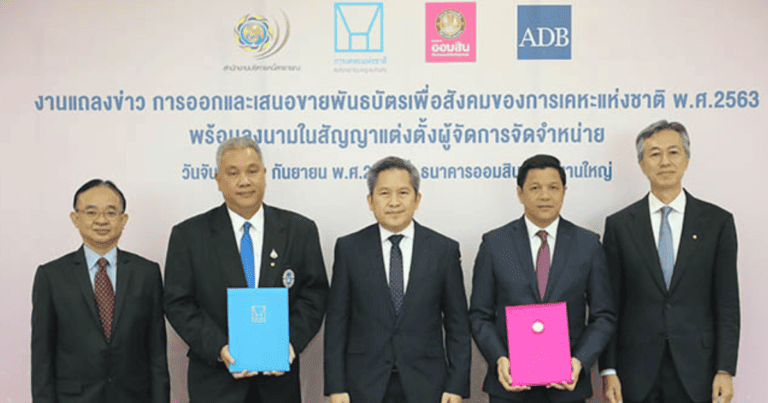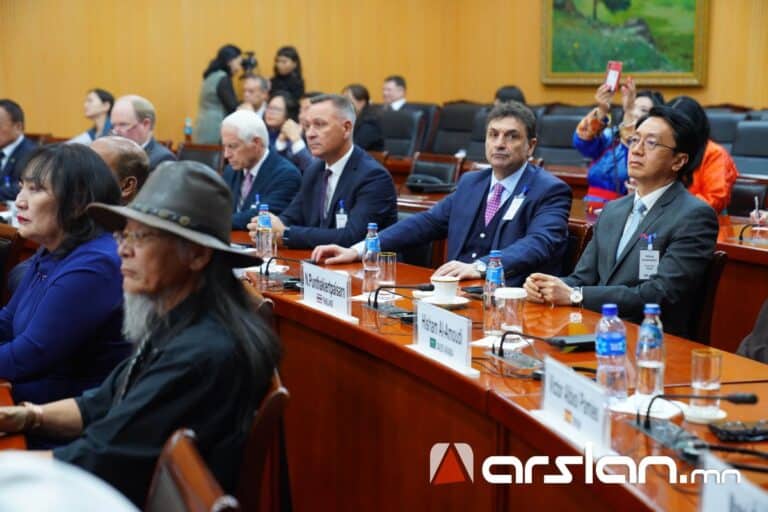Abhisit pointed out that the Thai economy is going backwards Slowest recovery in ASEAN, revealing 7 trap traps, pointing out the way to escape the government, increasing the role of Thailand in the world stage solve the inequality overhaul of the education system Dismantling the tax system as a progressive rate Rich people pay more SME Bank points out the weaknesses of Thai SMEs “Very small – lack of collateral” on the side of “Mr. Nattaphong” emphasized that interest rates – tax cuts must be reduced. help SMEs
On October 12, 2022, the Faculty of Social Sciences Srinakharinwirot University (Srinakharinwirot University) organized a seminar on “Changing strategies to save Thai economy” by Mr. Abhisit Vejjajiva, former prime minister, giving a special keynote speech “Thai economic trap: the solution and the way to survive” that the economy is a very important matter. which during the post-Covid-19 Many people think that they should see the tunnel light. But now there are complications from many problems. both domestic politics International politics, wars, supply chain changes. causing the cost of living and inflation becoming a big problem
Mr. Abhisit further said that Many people may be happy that the Thai economy in the second quarter of this year has recovered. with a growth rate of 2.5%, but compared to other countries in ASEAN, which expanded better considered the slowest recovery in Thailand Meanwhile, the competitiveness rankings show that Thailand’s ranking is even lower from the pre-COVID period. We will not be able to compete with other countries at all.
7 traps that drag the Thai economy from recovery
Mr. Abhisit said that the Thai economic trap will arise from 7 main things:
1. The middle-income country trap For many years, Thailand has not had any structural changes. There is no development to create added value in technology. including human development
2. Changing geopolitics Thailand is an open economy Its main income comes from exports. to rely on the global economy But now Thailand doesn’t know where they are. Not joining the Asia-Pacific Free Trade Area (CPTPP), not making any new trade agreements. There has been little progress on these matters.
3. Changes from technology Thailand has used a lot of technology. but lack of knowledge and readiness to use technology Last year was the first time Thailand had collected VAT from multinational technology companies. Found that Thai people spend a lot of money, whether it’s Google, Facebook, youtube, but Thailand collects very little tax.
4. Global warming From the survey, it was found that Thailand has not clearly passed the criteria. Whether it is the management of water, marine, and forest resources. At the same time, the British public utility company has estimated carbon emissions compared to that in the world from 1959 until 2032, where Thailand ranked second in the world in terms of emissions. gas and the most destructive
5. Aging society Now the proportion of elderly people is increasing rapidly. is about to increase to 30% of the total population in the next few years. People in labor age have to take care of many elderly people. and Thailand is an old society before wealthy society, old before rich.
6. Debt condition Thailand’s household debt rose to 90%, ranking 11th in the world and 3rd in Asia.
7. inequality Thailand is aggravated by globalization, technology, aging society, global warming, causing business monopoly, increasing bargaining power, labor, competitive states, reducing taxes, volatility.
Propose 3 benefits to reduce disparity to help SMEs Point out that the smallest person has 20 million, not just 3.1 million .
Mr. Nuttaphong Pantakiatpaisan Advisor to the Anti-Money Laundering and Narcotics Commission Discussing the problems of Thailand’s economy in the past that It is a structural problem that affects competitiveness. There is a disparity between large and small operators. There are gaps in both interest rates. Tax and Decentralization
“This country is a country of little people. It is a country of MSMEs. If according to government information There are about 3.1 million SMEs, there should actually be more. Because many people are probably not in the system. I believe that the number of people involved in the economy at this level should be up to 20 million people. Therefore, the issuance of various policies related to economic development should take into account SMEs as the main. because if most people can trade The country’s economy will be stable. Help reduce the impact of the global economic volatility. There is only one solution, which is to solve the problem of inequality throughout the system. This results in a stronger and more balanced economic structure. Develop thoroughly, most importantly, it will affect the reduction of conflicts in all dimensions of society. especially the political conflicts in the people’s sector.”
Mr. Nuttaphong said inequality in the country Need to urgently solve 3 issues: 1. Interest rate inequality which small and large entrepreneurs must be burdened with interest on loans or their ability to access sources of capital that are not too different 2. The country’s tax policy must aim to help solve the problem of inequality. by people with high income Large corporations should be taxed at progressive rates. while the smaller people have to bear the tax at a lower rate. 3. Emphasis on decentralization to local Spread the budget evenly for the country to be developed at all levels, not concentrated
Weaknesses for Thai SMEs : lack of liquidity
Ms. Nartnaree Ratthapat, Managing Director of the Small and Medium Enterprise Bank of Thailand (SME) said on the topic “Strategies for SMEs to be stable and prosperous” that SMEs in Thailand have a total of more than 3 million and more than 87% are smallholders (MICRO), mostly in the trade and service sectors. The GDP of SMEs plays an important role in about a third of the overall economy, or 35.3% of the country’s GDP. SMEs employ 12.6 million workers, representing 33.5% of the country’s total employment. while the export value of SMEs is 13.7% of the country’s export value.
“The long-standing problem of Thai SMEs is that SMEs do not have access to funding sources from financial institutions. The survey found that 24.02% lack of collateral, 19.94% lack of business plan, lack of payment history/becoming a new business, 15.11%, lack of profit potential/ability to pay debt 12.82%. Financial institutions 11.21% lack of financial management 3.81% owners or executives are incompetent 1.33%,” said Ms. Nartnaree.
Ms. Nartnaree further said that SMEs are greatly affected by COVID-19, especially the smaller SMEs, the more it affects, for example, the Microsystem (MICRO), which affects 77.8%. SMEs Need to speed up adjustment is the problem of lack of liquidity. And there are gaps to develop business in many areas. because of SMEs branded Product and service standards, including the use of the BCG Model in business, are still in a small proportion.








